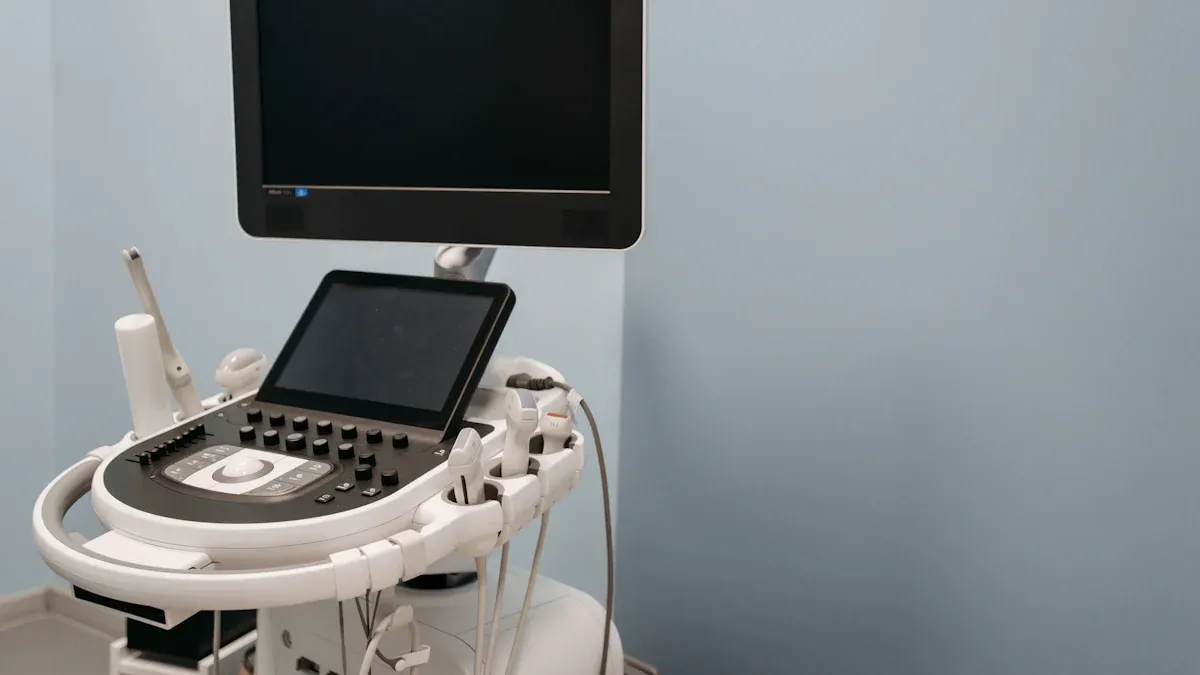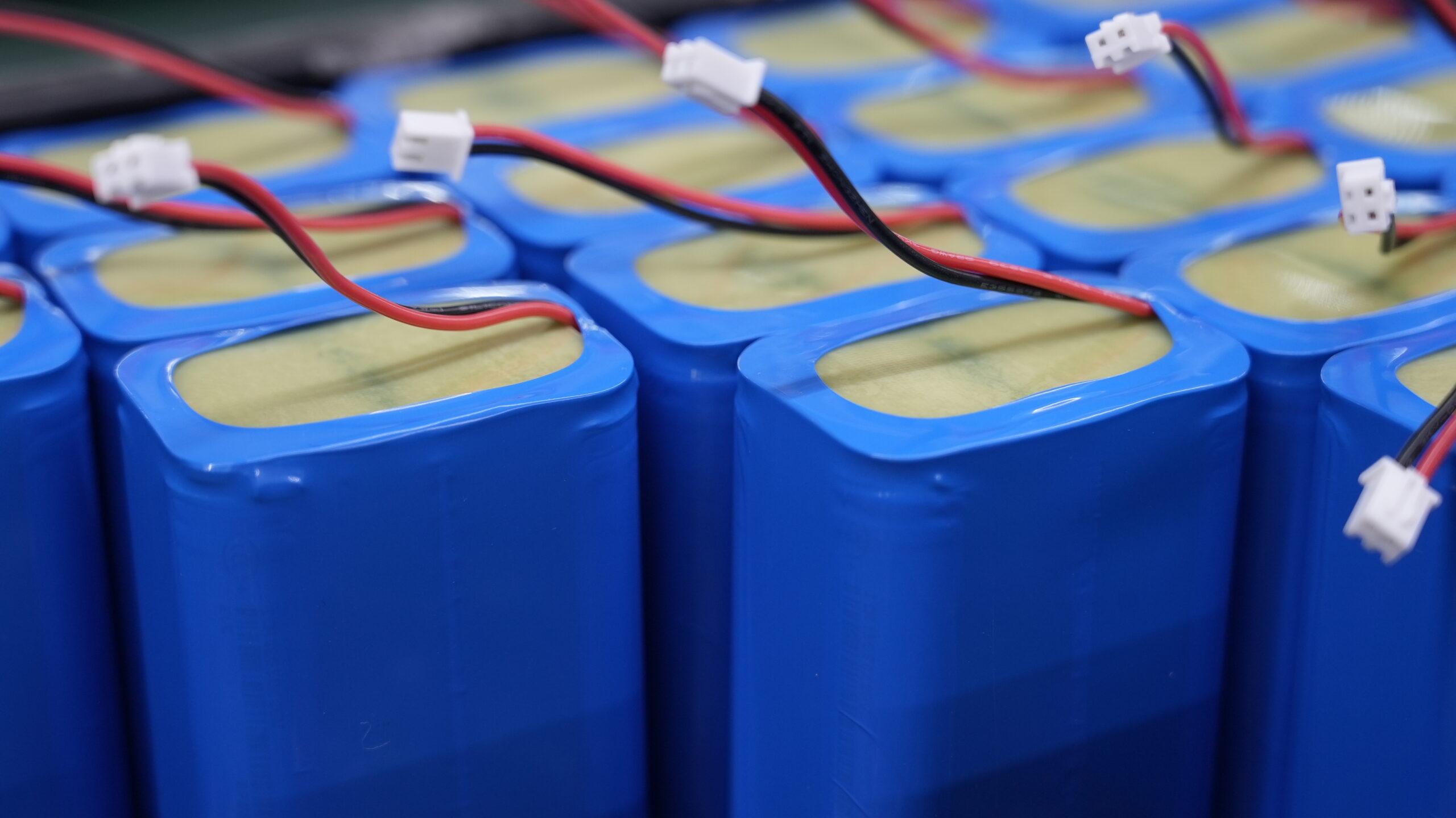
You demand Portable Ultrasound Equipment that runs longer, weighs less, and delivers reliable performance in critical settings. High energy density batteries make this possible. Lithium-ion batteries set the industry standard for medical devices, including ultrasound machines, because they maximize energy density and minimize weight.
Feature | Lithium Batteries | Other Chemistries |
|---|---|---|
Energy Density | High | Lower |
Weight | Lightweight | Heavier |
Charging Speed | Fast | Slower |
Self-Discharge Rate | Low | Higher |
Temperature Range | Wide | Limited |
Environmental Impact | Friendly | Varies |
Key Takeaways
High energy density batteries, like lithium-ion, enable longer operation times for portable ultrasound equipment, reducing the need for frequent recharging.
Lightweight batteries enhance the mobility of ultrasound devices, making them easier to transport and operate in various settings, including emergencies.
Reliable battery performance ensures uninterrupted operation, crucial for effective patient care in clinical and remote environments.
Combining high energy density with strong power density allows ultrasound devices to perform demanding tasks without lag, improving workflow efficiency.
Regular maintenance and advanced battery management systems can extend battery life and enhance safety, ensuring optimal performance in critical applications.
Part1: Energy Density in Portable Ultrasound Equipment

1.1 What Is Battery Energy Density
Battery energy density measures how much energy a battery stores compared to its weight or size. You see this expressed as specific energy density (Wh/kg) and volumetric energy density (Wh/L). These metrics help you evaluate how much power portable ultrasound equipment can deliver before needing a recharge. For example, batteries in portable ultrasound equipment often reach values near 200 Wh/kg and 500 Wh/L. This high energy density allows you to design compact devices that maintain strong performance in demanding environments.
Battery Chemistry | Platform Voltage (V) | Specific Energy Density (Wh/kg) | Cycle Life (cycles) |
|---|---|---|---|
Lead Acid | 2.0 | 30-50 | 200-300 |
NiCd | 1.2 | 45-80 | 500-1000 |
NiMH | 1.2 | 60-120 | 300-500 |
Li-ion (NMC) | 3.7 | 150-190 | 500-2000 |
LiFePO4 | 3.2 | 90-140 | 2000-5000 |
LCO | 3.6 | 150-180 | 500-1000 |
LMO | 3.7 | 100-150 | 500-1000 |
LTO | 2.4 | 70-80 | 7000-15000 |
Note: Lithium battery packs, especially NMC and LCO, offer the highest energy density for portable ultrasound equipment. You benefit from longer operational time and reduced device weight.
1.2 Importance for Portable Ultrasound Equipment
You rely on portable ultrasound equipment in clinical, emergency, and remote settings. High energy density directly impacts how long your device operates and how easily you can transport it. Smaller batteries with high energy density make your equipment lighter and more maneuverable. This is critical in medical, robotics, security, and industrial sectors, where mobility and reliability matter.
Handheld ultrasound devices face battery life limitations, affecting operational time.
Device weight influences portability and ease of use in clinical environments.
Equipment used in remote areas must be lightweight and rugged for portability.
Small size and maneuverability are essential for effective use in constrained spaces.
Reliable battery performance ensures uninterrupted operation, even during helicopter transport or in high-temperature conditions.
High energy density enables you to deliver advanced care without sacrificing mobility or reliability. You improve patient comfort and workflow efficiency by choosing batteries that maximize energy density.
Part2: Energy Density vs. Power Density
2.1 Power Density Overview
You often hear about energy density when selecting batteries for portable ultrasound equipment. However, power density is just as important. Power density measures how quickly a battery can deliver power to your device. While energy density tells you how much energy the battery stores, power density shows how fast the battery can release that energy when needed.
Here is a simple comparison:
Characteristic | Energy Density | Power Density |
|---|---|---|
Definition | Amount of energy stored per unit mass or volume | Maximum energy discharged per unit in a given time |
Measurement Units | kWh/kg or Wh/L | W/kg |
Application | RVs, marine equipment, home/commercial storage | Quick energy release in various applications |
High energy density batteries store more energy in a smaller space, which is ideal for portable ultrasound equipment. Power density, on the other hand, ensures your device receives enough power during demanding scans or rapid imaging sessions. You need both properties to achieve optimal performance.
2.2 Impact on Battery Performance
You rely on both energy density and power density to meet the demands of modern medical devices. High energy density allows you to design long-lasting batteries that keep your ultrasound equipment running for extended periods. This means fewer interruptions and more efficient workflows in clinical and field environments.
Power density affects how quickly your battery can deliver bursts of power. For example, when your ultrasound device requires rapid image processing or high-frequency scanning, the battery must supply enough power instantly. If the power density is too low, your device may lag or fail to perform at peak levels.
High energy density batteries provide longer operation times and reduce the need for frequent recharging.
Strong power density ensures your device can handle sudden spikes in power demand without performance drops.
You benefit from the combined advantages of high energy density and power density, especially in critical medical, robotics, and industrial applications.
Note: When you select lithium battery packs for portable ultrasound equipment, you gain the benefits of energy density for long-lasting batteries and the power needed for advanced imaging features. This balance supports reliable, high-performance operation in every scenario.
Part3: Benefits of High Energy Density Batteries
3.1 Longer Operation for Portable Ultrasound Equipment
You expect portable ultrasound equipment to deliver consistent performance throughout extended procedures. High energy density batteries allow you to achieve longer operating times without frequent interruptions for recharging. In clinical environments, you can perform multiple scans and diagnostics before the device requires a recharge. This advantage is especially important in emergency and field settings, where access to power sources is limited. Lithium battery packs provide superior energy storage, supporting continuous operation in medical, robotics, and industrial applications. You reduce downtime and improve workflow efficiency by selecting batteries with high energy density.
3.2 Lightweight and Mobility Advantages
You need equipment that is easy to transport and operate, especially in fast-paced or remote environments. High energy density batteries enable you to design lighter and more compact devices. This improvement enhances mobility and reduces operator fatigue during prolonged use. The following table demonstrates how battery weight impacts usability in different portable ultrasound device types:
Device Type | Weight (g) | Usability Impact |
|---|---|---|
Wired Probes | ~100 | Generally lighter, easier to handle for prolonged use. |
Wireless Models | 300-400 | Heavier, can cause discomfort during extended use, affecting imaging quality due to pressure. |
Battery Requirement | N/A | Requires regular charging, which can be a logistical challenge in emergency settings. |
You benefit from lithium battery packs that deliver high energy density while minimizing weight. This advantage supports better mobility in medical, security, and industrial sectors, where rapid response and ease of use are critical.
3.3 Enhanced Reliability and Efficiency
You rely on portable ultrasound equipment to function reliably in demanding conditions. High energy density batteries improve device reliability and operational efficiency. Lithium battery packs incorporate advanced battery management systems (BMS) that optimize safety and performance. You experience the following reliability improvements:
Advanced battery management systems enhance safety and performance in portable ultrasound machines.
Battery lifetimes can be extended from 10 years to 20 years, resulting in a 30% improvement in overall battery life.
Improved accuracy in state of charge calculations helps prevent overcharging and overdischarging, reducing risks of battery failure.
You gain confidence in your equipment’s ability to deliver accurate results and maintain consistent operation. These improvements benefit medical, robotics, infrastructure, and industrial sectors, where reliability and efficiency are essential for success.
Part4: Challenges and Risks
4.1 Safety and Cost Considerations
You face unique safety challenges when you select high energy density batteries for portable ultrasound equipment. Lithium-ion batteries deliver superior performance, but they require advanced battery management systems to prevent risks such as thermal runaway, especially in harsh environments. The following table compares safety risks and stability:
Battery Type | Safety Risks | Stability Under Extreme Conditions |
|---|---|---|
Lithium-ion | Requires complex battery management systems; risk of thermal runaway in harsh environments | Less stable under overcharging and short circuits |
Nickel-metal hydride | More reliable; stable under extreme conditions such as overcharging and short circuits | More stable due to aqueous electrolytes |
You must also consider cost. Lithium-ion batteries have a higher initial cost and require more maintenance compared to alternatives. However, their high energy density supports longer operation and lighter devices. The table below outlines cost differences:
Battery Type | Initial Cost | Lifespan | Maintenance Needs | Long-term Costs |
|---|---|---|---|---|
Lithium-ion | Higher | 2-5 years | Higher | Higher |
LiFePO4 | Lower | 10+ years | Lower | Lower |
The medical batteries market is growing rapidly, with lithium-ion batteries projected to hold the largest share due to their unmatched energy density and lightweight design. As demand rises, you can expect ongoing battery advancements and gradual cost reductions. For more on responsible sourcing, review our conflict minerals statement and sustainability approach.
4.2 Battery Lifecycle and Maintenance
You need to maximize the lifespan of lithium-ion batteries in your portable ultrasound equipment. Proper maintenance and monitoring are essential. Follow these best practices:
Monitor battery capacity and internal resistance regularly.
Purchase the newest batteries to minimize aging.
Implement low quiescent current and shutdown features.
Ensure high efficiency during active use.
Manage dynamic fast transient loads typical in medical devices.
Avoid extreme temperatures and check for physical damage.
Avoid full discharges; keep battery levels between 20% and 80%.
Use the manufacturer’s recommended charger.
Store batteries in a cool, dry place at about 50% charge when not in use.
You should also rely on advanced battery management systems (BMS) to optimize safety and performance. As solid-state batteries become more common, you will see improvements in safety, cycle life, and maintenance requirements. Solid-state batteries offer lower risk of thermal runaway and longer operational lifespans. You can expect solid-state batteries to play a larger role in future battery technology for medical, robotics, and industrial sectors.
Tip: Regular maintenance and adherence to best practices extend battery life and reduce operational risks.
Part5: Leading Battery Technologies and Innovations

5.1 Lithium Battery Advances
You see rapid progress in lithium battery chemistries for mobile ultrasound machines and other mobile devices. Lithium-ion and lithium-polymer batteries now power most portable ultrasound applications. These rechargeable batteries deliver high volumetric energy density, supporting compact designs and extended operation. You benefit from lithium battery technology that enables over an hour of continuous imaging, allowing uninterrupted patient care in medical, robotics, and industrial applications.
The following table compares lithium-ion and lithium-polymer batteries for portable ultrasound applications:
Feature | Lithium-Ion Batteries | Lithium-Polymer Batteries |
|---|---|---|
Energy Density | High energy density, ideal for portable electronics | Flexible energy density, can be tailored for specific applications |
Weight | Generally heavier | Lightweight, suitable for wearables and drones |
Safety | Good safety, but can be prone to overheating | Enhanced safety features due to polymer electrolyte |
Suitability for Ultrasound | Suitable for most portable devices | Excellent for flexible and lightweight designs, ideal for portable ultrasound devices |
You rely on lithium battery packs for mobile ultrasound machines because they combine high energy density with safety and reliability. These batteries support demanding applications in medical, security, and infrastructure sectors.
5.2 Future Trends in Battery Energy Density
You will see new lithium battery chemistries and innovations that further increase energy density for portable ultrasound applications. The market now includes lithium thionyl chloride and lithium-sulfur dioxide batteries, which promise higher energy density and longer lifespan. You benefit from ongoing development in lithium-based rechargeable batteries, which extend operational time and reduce maintenance needs for mobile devices.
Lithium thionyl chloride batteries offer improved volumetric energy density for mobile ultrasound applications.
Lithium-sulfur dioxide batteries provide enhanced energy density and stability for medical and industrial applications.
New battery chemistries continue to increase energy density and extend battery lifespan.
You should monitor advances in lithium battery technology, such as ultrasound-assisted charging and solid-state lithium batteries. These innovations will shape the future of mobile ultrasound machines and other mobile devices, supporting reliable operation in medical, robotics, security, and industrial applications.
Tip: You can optimize your mobile ultrasound equipment by selecting lithium battery packs with the latest chemistries and management systems.
High energy density remains essential for portable ultrasound equipment. You gain longer operation, lighter devices, and reliable performance by choosing lithium battery packs. ICR14650 batteries deliver steady power and extended cycle life, supporting cost-effective solutions for medical and industrial applications.
Longer operational periods for portable devices
Steady power supply for compact equipment
Reduced total cost of ownership with long cycle life
You should prioritize high energy density when selecting batteries for portable medical devices to ensure optimal efficiency and reliability.
FAQ
What makes lithium battery packs ideal for portable ultrasound equipment?
Lithium battery packs deliver high energy density and lightweight design. You achieve longer operation and easier transport in medical and industrial settings. These batteries support advanced imaging features and reliable performance. Consult Large Power for your custom battery project.
How do you maximize the lifespan of lithium battery packs?
You should monitor battery health, avoid full discharges, and use manufacturer-recommended chargers. Store batteries at 50% charge in cool, dry places. Regular maintenance extends operational life and reduces downtime.
Tip: Implement advanced battery management systems for optimal safety and efficiency.
Are lithium battery packs safe for use in medical devices?
You benefit from robust safety features in lithium battery packs, including thermal management and advanced battery management systems. These safeguards minimize risks in medical, robotics, and security applications.
What are the main challenges with lithium battery packs in portable equipment?
You face higher initial costs and complex maintenance requirements. However, you gain longer operational periods and reduced device weight, which outweigh these challenges in professional environments.
Can lithium battery packs support rapid imaging and high-frequency scans?
Yes. Lithium battery packs provide strong power density, enabling your portable ultrasound equipment to handle demanding imaging tasks and quick data processing in clinical and industrial sectors.




